How to Choose the Right Software Development:
A Comprehensive Guide
Table of Contents

Choosing the right software development approach is crucial for the success of any technology project. Whether you’re a startup, a growing business, or an established enterprise, the decisions you make in this area can impact everything from your project’s budget and timeline to its overall success and alignment with your business goals. This guide will walk you through the essential factors to consider when choosing a software development methodology, process, technology, and developer, ensuring you make informed decisions that lead to successful outcomes.
In today’s rapidly evolving tech landscape, selecting the right software development strategy can be a daunting task. With numerous methodologies, processes, and technologies available, how do you ensure you’re making the best choices for your project? This comprehensive guide will provide clear, practical advice on how to choose the right software development approach and partner for your needs.
Understanding Software Development
Before diving into how to choose the right approach, it’s important to understand what software development encompasses. Software development involves designing, creating, testing, and deploying software applications or systems. The process can vary greatly depending on the project’s requirements, goals, and constraints.
Key Factors to Consider
1. Defining Your Project Goals and Requirements
Identify Your Objectives: The first step in choosing the right software development approach is to clearly define your project’s goals. Are you building a new product, enhancing an existing one, or integrating with other systems? Understanding your objectives will guide your decisions throughout the development process.
Gather Requirements: Documenting detailed requirements is crucial. This includes functional requirements (what the software should do) and non-functional requirements (how the software should perform, including security, scalability, and usability). A well-defined set of requirements helps in selecting the most appropriate methodology and technology.
2. Choosing the Right Software Development Methodology
Agile vs. Waterfall: Two of the most common methodologies are Agile and Waterfall. Agile is iterative and flexible, allowing for changes and improvements throughout the development process. Waterfall, on the other hand, is a linear approach where each phase must be completed before moving on to the next. The choice between Agile and Waterfall depends on your project’s needs for flexibility and predictability.
Scrum and Kanban: Within Agile, there are specific methodologies like Scrum and Kanban. Scrum focuses on iterative progress through sprints, while Kanban emphasizes continuous delivery and workflow optimization. Choose based on whether you need structured sprint cycles or a more fluid, ongoing process.
Hybrid Approaches: In some cases, a hybrid approach may be suitable, combining elements of different methodologies to fit your specific needs.
3. Selecting the Right Software Development Process
Development Process Models: Different processes can be employed, such as the Incremental model, Spiral model, or V-Model. Each has its strengths and is suited to different types of projects. For instance, the Incremental model allows for partial deployment and feedback, while the Spiral model focuses on iterative development with risk assessment.
Project Size and Complexity: The complexity and size of your project will influence the process you choose. Larger, more complex projects may benefit from processes that offer greater control and risk management.
Team Expertise and Experience: The experience and skill level of your development team can also impact your process choice. Ensure that the process you select aligns with your team’s capabilities and expertise.
4. Choosing the Right Technology
Technology Stack: The technology stack includes the programming languages, frameworks, databases, and tools used in development. Selecting the right stack is crucial for ensuring that the software meets your functional and performance requirements.
Scalability and Future-Proofing: Consider how well the technology stack supports scalability and future growth. Choose technologies that are well-supported and have a strong community or ecosystem to ensure long-term viability.
Integration Capabilities: Your software will likely need to integrate with other systems or platforms. Ensure the technology stack you choose supports these integrations and can handle the necessary data exchanges.
5. Selecting the Right Software Developer or Development Company
Experience and Expertise: Evaluate potential developers or development companies based on their experience and expertise in your specific industry or technology. Look for a proven track record and relevant case studies.
Portfolio and References: Review their portfolio and ask for references from previous clients. This will give you insights into their work quality and client satisfaction.
Communication and Collaboration: Effective communication is key to a successful development partnership. Ensure that the developer or company you choose is transparent, responsive, and willing to collaborate closely throughout the project.
Cost and Budget: While cost is an important factor, it should be balanced with quality and expertise. Avoid choosing based solely on the lowest bid; instead, consider the value and benefits provided.
The Five Factors to Consider When Choosing a Software Development Methodology
-
Project Scope and Requirements: The complexity and scale of your project will heavily influence your choice of methodology. Large, complex projects may benefit from more structured approaches like Waterfall, while smaller, evolving projects might be better suited to Agile.
-
Budget and Timeline: Consider your budget and timeline constraints. Agile methodologies often provide more flexibility and can adapt to changes, which may be beneficial for projects with uncertain requirements or tight deadlines.
-
Team Dynamics: The skillset and experience of your team should align with the chosen methodology. Ensure that your team is comfortable and experienced with the approach you select.
-
Risk Management: Assess the risks associated with your project and choose a methodology that offers effective risk management strategies. For instance, the Spiral model includes regular risk assessments, which can be advantageous for high-risk projects.
-
Stakeholder Involvement: Determine the level of stakeholder involvement required. Agile methodologies often involve regular stakeholder feedback, which can be beneficial for projects where ongoing input is crucial.
How to Choose the Right Software Development Company
-
Define Your Needs: Clearly outline your project needs, goals, and requirements before reaching out to potential development companies. This will help you find a company that aligns with your vision.
-
Conduct Research: Research potential companies by reading reviews, checking their reputation, and comparing their expertise. Look for companies with experience in your industry or with similar projects.
-
Request Proposals: Reach out to several companies and request detailed proposals. Compare their approaches, timelines, costs, and how well they address your specific needs.
-
Evaluate Communication: Assess how well each company communicates and collaborates. Effective communication is crucial for a successful development partnership.
-
Check References and Case Studies: Request references and review case studies to gain insights into the company’s past performance and client satisfaction.
Key Factors to Consider
Defining Your Project Goals and Requirements
| Aspect | Description |
|---|---|
| Objectives | Define what you want to achieve with the software. |
| Requirements | Document both functional (what the software should do) and non-functional (how it should perform) requirements. |
Choosing the Right Software Development Methodology
| Methodology | Description | Best For |
|---|---|---|
| Agile | Iterative, flexible, and collaborative approach. | Projects needing flexibility and ongoing input. |
| Waterfall | Linear and sequential approach with distinct phases. | Projects with well-defined requirements and no expected changes. |
| Scrum | Agile framework focusing on sprints and regular reviews. | Projects needing structured progress and frequent reassessment. |
| Kanban | Agile method emphasizing continuous delivery and workflow optimization. | Projects requiring ongoing work without fixed timelines. |
| Hybrid | Combination of methodologies tailored to specific needs. | Projects with diverse requirements that need elements from multiple approaches. |
Selecting the Right Software Development Process
| Process Model | Description | Advantages |
|---|---|---|
| Incremental | Development in stages, allowing for partial deployment and feedback. | Flexibility and early delivery of functional parts. |
| Spiral | Iterative approach with continuous risk assessment. | High risk management and iterative improvements. |
| V-Model | Linear approach with verification and validation phases. | Structured development and rigorous testing. |
Choosing the Right Technology
| Aspect | Considerations |
|---|---|
| Technology Stack | Includes programming languages, frameworks, and tools. |
| Scalability | Ensure the technology supports growth and increased load. |
| Integration | Compatibility with other systems and platforms. |
Selecting the Right Software Developer or Development Company
| Criteria | Considerations |
|---|---|
| Experience | Look for experience in your industry or with similar projects. |
| Portfolio | Review past work and case studies. |
| Communication | Ensure effective and transparent communication throughout the project. |
| Cost | Balance cost with quality and expertise. |
The Five Factors to Consider When Choosing a Software Development Methodology
| Factor | Description | Considerations |
|---|---|---|
| Project Scope | Complexity and scale of the project. | Larger projects may need more structured approaches. |
| Budget and Timeline | Constraints affecting flexibility and delivery. | Agile may offer better adaptability for tight deadlines. |
| Team Dynamics | Skills and experience of your team. | Choose a methodology aligned with your team’s expertise. |
| Risk Management | Approach to identifying and mitigating risks. | Spiral model offers strong risk management. |
| Stakeholder Involvement | Level of ongoing stakeholder input needed. | Agile methodologies often involve regular feedback. |
How to Choose the Right Software Development Company
| Step | Description |
|---|---|
| Define Your Needs | Clearly outline your project requirements and goals. |
| Conduct Research | Read reviews, check reputation, and compare expertise. |
| Request Proposals | Compare approaches, timelines, and costs from different companies. |
| Evaluate Communication | Assess the company’s responsiveness and collaboration. |
| Check References | Review past performance and client feedback. |
Conclusion
Choosing the right software development methodology, process, technology, and partner is a critical decision that can significantly impact your project’s success. By understanding your project’s goals, evaluating different methodologies and processes, selecting the right technology stack, and choosing a skilled developer or development company, you can ensure that your software project meets your needs and delivers the desired outcomes.
For more guidance on choosing the right software development approach and partner, visit upforcetech.com. Our experts are here to help you make informed decisions and achieve success in your software development projects.
Ready to find the perfect software development strategy for your project? Visit upforcetech.com to get expert advice and start your journey towards success.
Sign up for the free Newsletter
Choosing the right software development approach is not just about technology; it’s about aligning your strategy with your business goals for a successful outcome.
UpforceTech
FAQs
When choosing a software development methodology, consider factors such as the complexity and scope of your project, budget and timeline constraints, team dynamics, risk management requirements, and the level of stakeholder involvement needed. Selecting the right methodology can significantly impact the success of your project.
To choose the right software development process, evaluate your project’s needs for flexibility, control, and risk management. Common processes include Incremental, Spiral, and V-Model. Consider the size and complexity of your project, your team's expertise, and how well the process supports your project goals.
Selecting the right technology stack involves assessing your project’s functional and performance requirements, scalability needs, and integration capabilities. Choose technologies that are well-supported, have a strong community, and align with your project’s long-term goals.
To find the best software developer or development company, review their experience, portfolio, and client references. Evaluate their communication skills and how well they understand your project requirements. Ensure that their expertise aligns with your industry and technology needs.
The five factors to consider are:
- Project Scope – The complexity and size of your project.
- Budget and Timeline – Constraints that affect flexibility and delivery.
- Team Dynamics – The skills and experience of your development team.
- Risk Management – Strategies for identifying and mitigating risks.
- Stakeholder Involvement – The level of input and feedback required from stakeholders.
Define your project goals by clarifying what you want to achieve and the problems you aim to solve. Gather detailed requirements, including both functional aspects (what the software should do) and non-functional aspects (how it should perform, including security, scalability, and usability).
Choosing the right software development methodology ensures that your project is managed effectively, aligns with your business goals, and adapts to changes. It impacts project delivery, budget adherence, and overall success, making it crucial for achieving desired outcomes.

